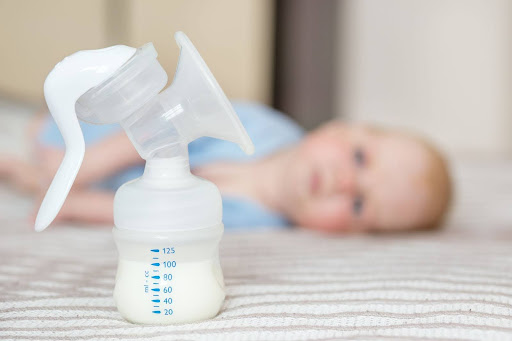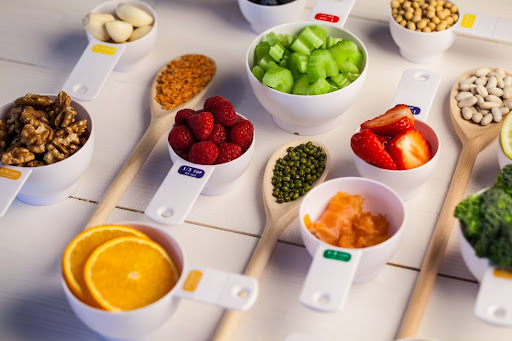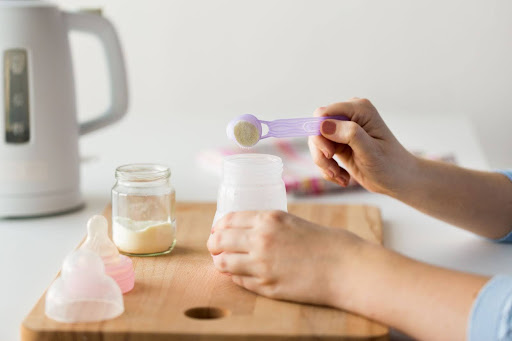
For many moms, low breast milk supply can feel like an uphill battle—especially when pumping. New mothers often face unique challenges with low breast milk supply during the first few weeks, making the early days of breast milk production stressful. Whether you’re building a stash before an upcoming trip, exclusively pumping, or simply trying to make sure your baby has enough, not getting the ounces you expect can be frustrating and discouraging.
If you’re wondering how to increase breast milk supply when pumping, this guide will walk you through science-backed strategies, nutritional considerations, and an often-overlooked solution: freeze-drying breast milk.
How Much Milk Is Enough Breast Milk?

One of the most common worries for pumping moms is: “Am I making enough?” It’s easy to feel disappointed when you’re comparing output to a friend or seeing social media posts of moms with pumping success—but the truth is, “enough” is different for everyone.
What’s Normal Pumping Output?
If you’re exclusively pumping or pumping in addition to breastfeeding, here’s what’s generally considered normal:
- 0.5 to 2 ounces combined (both breasts) per session is normal for moms who are also breastfeeding.
- 2 to 6 ounces combined per session is typical for exclusive pumpers after milk supply is established.
- Output can vary depending on the time of day—mornings usually yield more than evenings.
Signs Your Baby Is Getting Enough Milk (Even If Output Feels Low):
- 6+ wet diapers per day
- Regular bowel movements
- Steady weight gain
- Baby seems content after feeding
Don’t Judge Based on Frozen Stashes
Having a freezer full of milk doesn’t mean someone has a healthier supply. Often, those stashes are built gradually, not overnight—and not every baby needs gallons of backup milk.
What matters most is meeting your baby’s daily needs—not overproducing. That’s why strategic storage, like freeze-drying milk during high-output periods, can provide peace of mind without forcing you to chase higher volumes day after day.
Why Is My Milk Supply Low When Pumping?

Before diving into how to boost supply, it’s helpful to understand why milk output might seem lower during pumping sessions compared to direct breastfeeding. Different breast pumps and their settings can also impact milk output. Common reasons include:
- Pump suction isn’t as effective as a baby’s latch; a proper baby’s latch is often more effective than a breast pump for milk removal
- Pumping sessions aren’t frequent or long enough
- Stress, dehydration, or fatigue
- Hormonal fluctuations or certain medications
- Poorly fitting pump flanges; choosing the right breast pump and correct shield size is important for comfort and effectiveness
- Nutritional deficiencies
Using a high-quality breast pump and pumping both breasts at once is often more effective than pumping one breast at a time.
The good news? Most supply issues during pumping can be addressed with the right adjustments and support.
1. Pump More Frequently and Effectively

Milk production operates on a demand-supply loop: frequent stimulation of the breasts is key to increasing milk production—the more often and thoroughly you empty the breasts, the more signals your body receives to make more milk. Many women find that frequent stimulation helps increase and improve their milk supply.
Try These Pumping Frequency Tips:
- Pump every 2–3 hours during the day, mimicking a newborn’s feeding schedule.
- Don’t skip nighttime pumps—prolactin (the milk-making hormone) peaks at night.
- Double pump (both breasts at once) to stimulate more hormones and save time; using a double electric breast pump can make this process more efficient and effective.
- Add power pumping to your routine once or twice a day (20 minutes pump, 10 rest, 10 pump, 10 rest, 10 pump).
Ensure You’re Emptying the Breasts
Breast stimulation through compressions and continued pumping can help empty the breasts more fully. Use breast compressions while pumping to increase breast stimulation and encourage milk flow. You should feel a noticeable “softness” when done. If milk stops flowing before 15 minutes, continue for another 5–10 minutes to stimulate more letdowns.
2. Stay Hydrated—Seriously

One of the most overlooked contributors to an actual low milk supply is dehydration. Your body needs extra fluids to support milk production. If you’re even slightly dehydrated, output may drop.
Hydration Tips for Pumping Moms:
- It is recommended to drink at least 128oz of fluids each day or 16 8oz cups of water.
- Keep a water bottle next to your pump station. Drink water while you pump.
- Add electrolytes for better hydration (look for breastfeeding-safe options without added sugar or artificial ingredients).
- Limit caffeine and alcohol, which can dehydrate you.
Hydration isn’t a magic fix—but without it, no other milk-boosting technique will work optimally.
3. Focus on Nutrient-Dense Foods (and Galactagogues)

To produce more breast milk, nutrition plays a crucial role in the formula. A well-balanced diet with the right macronutrients and micronutrients supports consistent production. Nutrient-dense foods also help support the production of milk-making hormones essential for lactation.
Eat These for Better Milk Supply:
- Protein-rich foods: eggs, legumes, poultry, tofu
- Healthy fats: avocados, nuts, seeds, olive oil
- Whole grains: oats, brown rice, quinoa
- Leafy greens: spinach, kale, Swiss chard
- Fruits and veggies: especially those high in vitamin C and B-complex
Try Natural Galactagogues:
Galactagogues are substances believed to support milk production. Some common options include:
- Oats and oat milk
- Fenugreek (in moderation and with medical guidance)
- Fennel, milk thistle, and blessed thistle
- Brewer’s yeast
- Moringa
Always check with a healthcare provider or lactation consultant before starting new supplements, especially if you have underlying conditions.
4. Limit Stress and Prioritize Rest

Pumping doesn’t happen in a vacuum. Mental health, sleep, and stress levels all influence oxytocin and prolactin—two hormones that directly impact milk letdown and production. In addition to normal hormonal fluctuations, certain hormonal conditions can also impact milk supply and should be discussed with a healthcare provider if suspected.
Simple Tips to Support Relaxation:
- Try skin-to-skin contact with your baby before or after sessions
- Avoid multitasking when possible—give yourself permission to rest
- Consider short naps during the day when possible
Your mental and emotional well-being directly contributes to physical output. The more relaxed and rested you are, the more responsive your body will be to pumping.
Resting with a newborn to take care of is a hard ask- we get it! Be sure to give yourself grace as you do the best you can to balance motherhood with taking care of yourself.
5. Create a Freeze-Dried Milk Inventory for Low Supply Days

Even with the best techniques, milk supply naturally fluctuates. Illness, hormonal shifts, menstruation, and returning to work can all cause a dip. If you are unable to provide all the milk your baby needs, donor milk, formula milk, or infant formula can be safe alternatives to support your baby’s nutrition. But if you only wish to provide your baby with your breast milk, that’s where the freeze-drying process can help.
Why Freeze-Dry Your Milk With BoobieJuice?
- Preserves nutrients better than traditional freezing
- Eliminates waste—milk that might otherwise expire is saved long-term
- Lasts for 3+ years unopened
- Lightweight, travel-friendly, and doesn’t require refrigeration
- Rehydrated only when needed
Think of freeze-dried breast milk as your insurance policy: you can stock up during periods of high output and use it confidently during supply dips without stressing about pumping extra.
6. Use Nutritional Testing to Pinpoint Deficiencies

Many moms try everything and still struggle with low supply—sometimes due to unseen nutritional deficiencies. That’s why BoobieJuice offers help with nutritional testing services that can:
- Understand your macro and micro nutrition of your milk
- Suggest personalized diet or supplement recommendations
- Offer insights into how your diet supports (or hinders) lactation
- Help optimize overall energy, mood, and postnatal recovery with peace of mind
You don’t have to guess. Testing offers clear, data-driven insights into how to better support your body and improve milk supply.
7. Don’t Compare Output: Every Mom Is Different

Finally, remember that what counts as a “low milk supply” varies widely. How much milk each mother produces is different—some may produce less milk than others, but still have enough milk for their baby’s needs. Some moms pump 2 ounces, while others may produce 6–8 ounces per session. How much milk you produce depends on many factors, including:
- Baby’s age and feeding habits
- Time of day (mornings often yield more)
- Pump type and flange fit
- Your own body’s rhythm
Instead of comparing, track your own trends and build a system that supports you—like using BoobieJuice to freeze-dry surplus milk during your most productive periods. Tracking how much milk you produce over time is more helpful than comparing your output to others.
FAQs: Increasing Milk Supply When Pumping

Can I increase milk supply just by pumping more?
Yes, pumping more frequently and thoroughly can signal your body to increase production over time. Power pumping and nighttime sessions are especially effective.
What is a galactagogue, and do they work?
Galactagogues are foods or supplements thought to increase milk supply. While not all are proven, many moms find oats, moringa, and fennel helpful. Always check with your provider first.
How much water should I drink to support milk supply?
It is recommended to drink 128oz of water (or 16- 8oz) cups each day. Staying well-hydrated is essential for optimal milk production. If you don’t think you’ve drunk enough water during the day, then you probably haven’t.
How can I store extra milk long-term?
Freeze-drying with BoobieJuice allows you to store milk safely for years, without relying on freezer space or risking nutrient degradation.
Is low breast milk supply permanent?
No, most cases of low supply can be improved with consistent effort, good nutrition, and stress management. Tracking patterns and building up an emergency stash can also ease the pressure of the desire for a full milk supply.
Let BoobieJuice Help Increase Your Milk Supply
If you’re struggling with low breast milk supply while pumping, you’re not alone—and you’re not out of options. By adjusting your pumping habits, staying hydrated and nourished, reducing stress, and preserving your high-output days with freeze-dried breast milk, you can take back control of your feeding journey.
BoobieJuice can help you store extra breast milk the smart way—nutrient-rich, long-lasting, and ready when you need it most. Learn more about our freeze-drying services and nutritional testing to unlock your milk-making potential.
